About a month ago we (Saleslion) hosted a webinar with the CEO of Insivia, Andy Halko to learn more about how Insivia’s sales cycle optimization allowed them to double their close rates even during the height of the pandemic.
And today we are going to be talking about how you can optimize your sales process to give your team heightened efficiency and boost your revenue.
In this article…
- What is Sales Cycle Optimization
- Why is Sales Process Optimization Important
- Breakdown of the Typical B2B Sales Process
- The Role of Technology in Sales Process Optimization
- Key Takeaways
What is Sales Cycle Optimization
Simply put, sales cycle optimization is the steps taken to enhance a current sales process so that it is more efficient, effective, and productive for the customer and the company.
Sales process optimization is about improving the sales cycle to drive better results.
Whether it’s closing deals more quickly, increasing revenue, or improving the customer experience, optimizing the sales process can help businesses achieve their goals.
Different companies can implement different strategies to improve their sales, from optimizing top-of-the-funnel systems to improve lead generation to enhancing discovery calls so that their complex solution is communicated in a simple way.
But while the specific details behind the optimization strategy might look different for each company, the results are still the same: a better, more effective sales process that drives increased revenue.
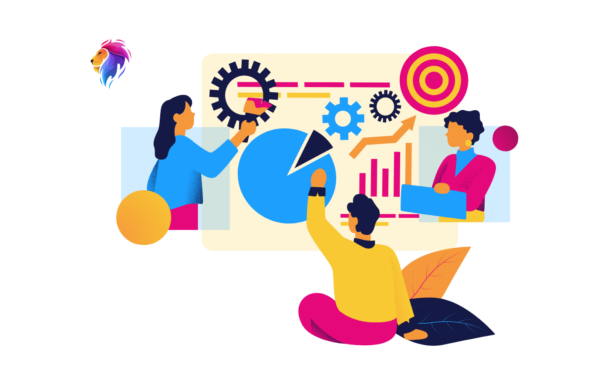
Why is Sales Process Optimization Important
Do you want to close deals more quickly, increase revenue for your company, or simply improve the customer experience? If so, you should consider optimizing your sales process to achieve those goals.
In school, learning was a constant part of life. If you weren’t learning, then you would fall behind. The same is true in sales.
If your sales leaders aren’t constantly learning about ways to improve their sales process then your company will quickly fall behind competitors and fade away. And if your teams don’t know how to optimize your sales process, let this article be the first warning sign to invest in a sales audit today.
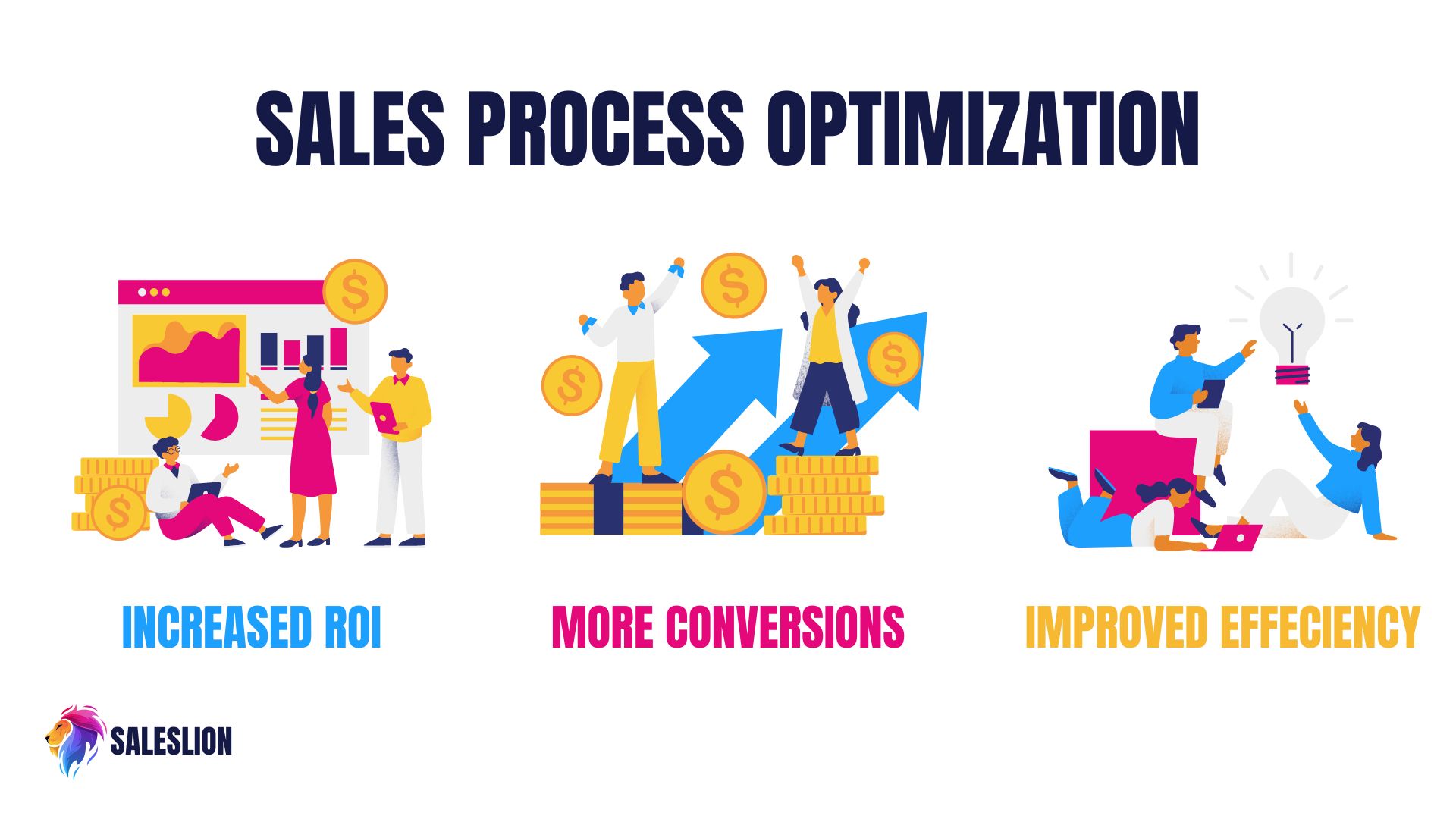
Sales process optimization is important for 3 key reasons:
- Increased ROI: Firstly, when you optimize your sales process, you will be able to identify your company’s biggest areas of improvement. This knowledge can then allow you to streamline the sales pipeline, speed up the sales cycle, and eventually increase your ROI.
- More Conversions: Another key reason why you should optimize your sales cycle is that a quality sales process will lead to more conversions. If your prospects fully understand the solution you offer, have been engaged in the process from start to finish, and feel valued through personalized features, they will be more likely to convert to a paying customer.
- Improved Efficiency: Finally, sales optimization is key to improving your sales efficiency. If your sales team is spending too much time on menial tasks instead of closing deals, optimizing your sales funnel can help eliminate those weak spots so that everyone from your sales reps to your CROs can be as efficient as possible.
Especially in the digital world of today, the competition is fierce. That is why sales process optimization is so vitally important for your company.
Breakdown of a Typical B2B Sales Cycle
The typical B2B sales cycle flows from discovery to close. Below we are going to break down exactly what goes into each stage of this process and highlight different sales pipeline optimization tactics that can be used to enhance each stage.
Discovery
The first stage of most B2B sales processes is the discovery phase. This is your first opportunity to connect with prospects, get to learn more about their wants and needs, and introduce them to your solution.
Most importantly, this phase is to listen to your customers and truly understand their unique situation. At least 60% of this phase should be focused on listening to the customer rather than on sharing information on your solution.
But when you do share about yourself, it is critically important to communicate your product or service in a concise manner so that the prospect truly understands what is being offered.
One easy way to optimize this section of the process is to use a digital sales room. These sales tools are excellent when it comes to organizing the prospect’s specific needs and wants and communicating complex information in a simple way.
Fit
After you have completed the discovery call and the prospect has expressed interest in moving further down the sales funnel, you will enter the fit stage. Also known as the business fit phase, this stage is a great time to provide a demo of your solution.
With different sales enablement tools such as mutual action plans or solutions boards, you optimize your sales process through collaboration with prospects. This will make it much easier for your sales professionals to tailor your solution to the exact needs of the customer.
Data and analytics platforms can also be extremely useful here as they can accurately portray customer behavior so that you can adjust your sales strategy accordingly. But more on the importance of data later.
Proposal
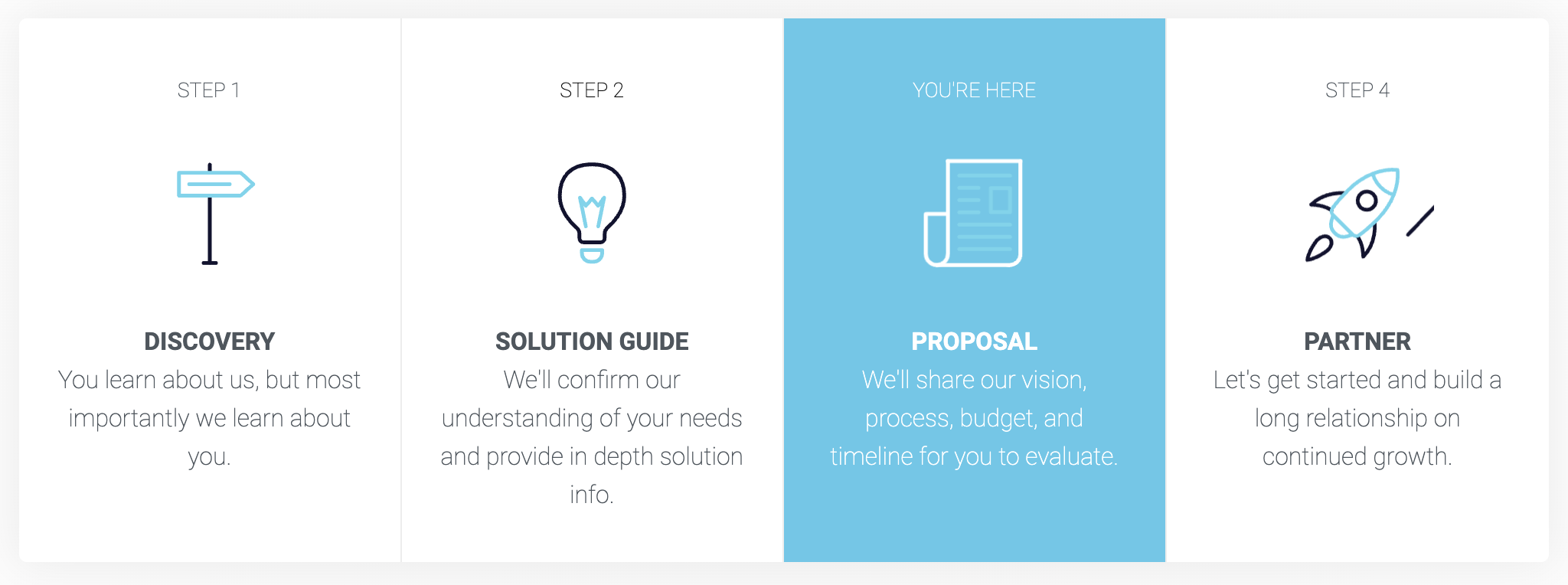
This stage of the sales process is often one of the most important. As you have built trust and relationships with prospects during the earlier stages, this is where all of that work comes to pay off.
If your prospects fully understand what you are offering, if you have tailored the solution so that it meets their specific needs, and if they trust that you will provide them with the value they need, then the proposal will be a success.
But if you have made personalization front and center in the earlier stages, it should be present in the proposal as well.
Especially in this digital age, PDF proposals are long since stale. A quick and easy sales process optimization tactic is to eliminate any generic proposal templates and instead use a software like a digital sales room to end the process on the best note possible.
Close
The final stage is close.
Either you make the deal or you don’t. Either you gained a new customer or you lost one.
This is the ultimate goal of the sales cycle and requires a solid strategy to ensure success.
According to this article by Selling Signals, there are several closing techniques that you can use to seal the deal more effectively, along with negotiating the deal after the proposal has been sent.
Sales enablement software can help smoothen the process so that the closing phase is easy and comfortable, thus improving close rates.
The Role of Technology in Sales Process Optimization
The title of this article is ‘How to Optimize Your Sales Process.’
So, how do you actually do it?
With technology.
Whether your sales teams are using explainer videos prior to the discovery phase or you are using sales enablement software in the closing phase as illustrated above, technology plays a crucial role in optimizing your sales process.
Below are 3 of the best tools or platforms to assist you in your process optimization journey.
CRM Technologies
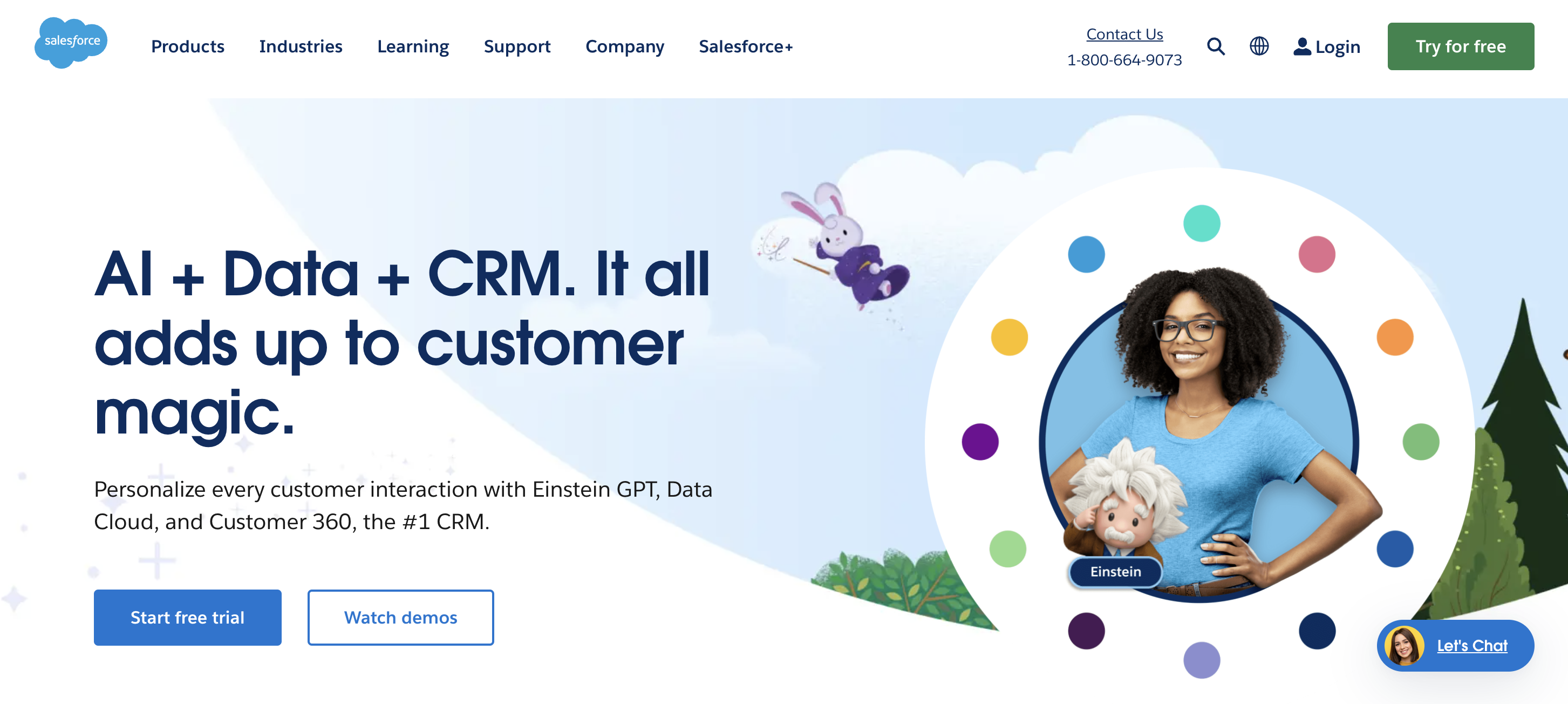
Assisting with top-of-the-funnel sales, customer relationship management (CRM) technologies can do wonders for your sales team.
From managing contacts and leads to tracking customer data CRM tools can be incredibly effective for companies who lack strong customer management within their sales process. By tracking customer interactions and analyzing data, businesses can gain insights into areas for improvement and make data-driven decisions to optimize their sales.
Popular CRM technologies include Salesforce (above), Hubspot, and Zoho CRM
Data Analytics Platforms
Understanding data is fundamental to the success of your business.
With data analytics platforms you can predict customer behavior, optimize campaigns, and enhance your sales strategy. By tracking and analyzing sales data, you can also identify areas of the cycle that are slowing down revenue growth or causing delays in closing deals.
With all of this information, you will be able to gain a competitive advantage in your target market.
Examples of data analytics platforms include Google Analytics 4 and Microsoft Power BI
Digital Sales Rooms
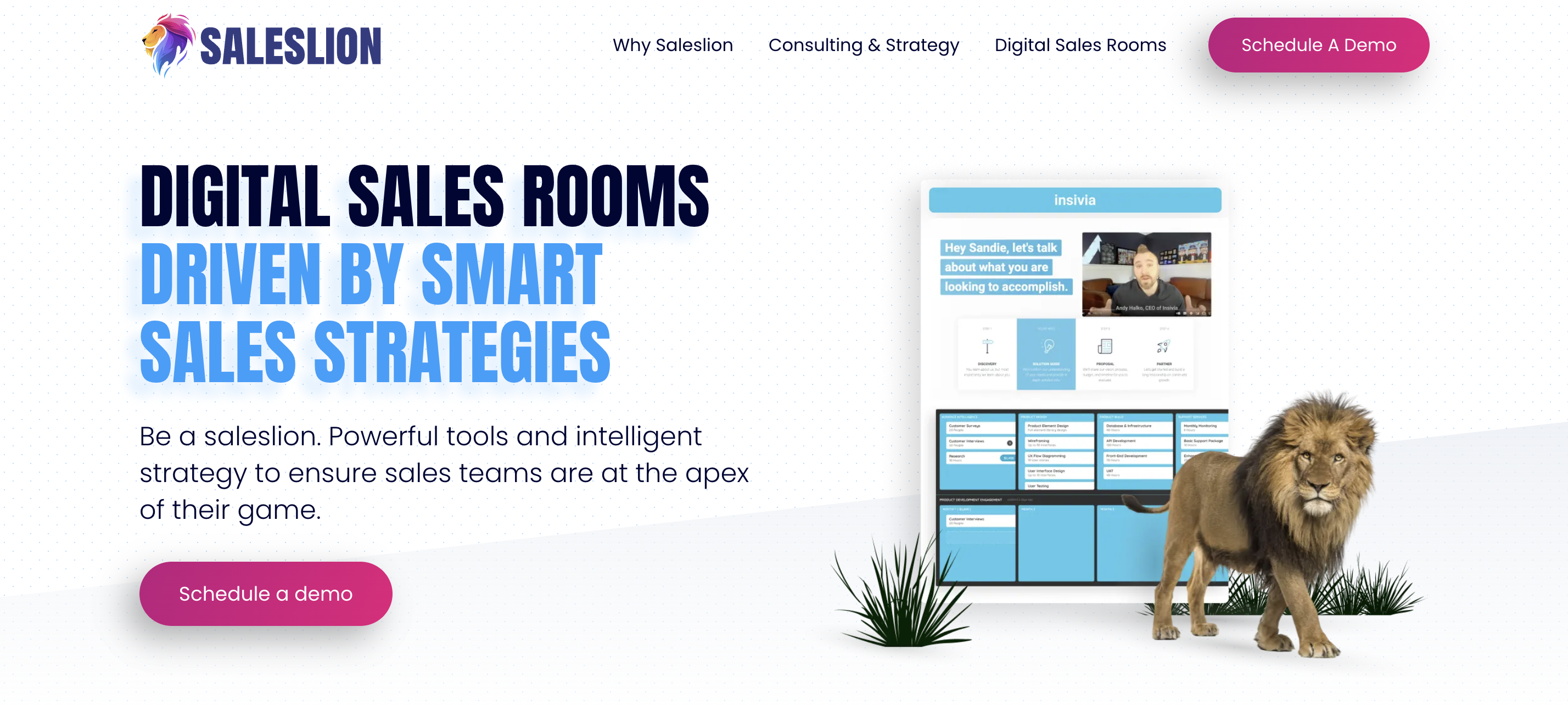
Digital sales rooms combine the best features of sales enablement and sales engagement platforms to become one of the most effective tools for sales process optimization.
This sales enablement software simultaneously streamline the process so that sales reps and managers are able to work more efficiently and enhance the process so that customers stay engaged and interactive throughout the whole process
Examples of digital sales rooms include Saleslion (above), Mediafly, and Beehivr.
Key Takeaways
If you’re looking to achieve better results with your sales process, optimization is key. By improving your processes, you can increase efficiency, generate more revenue, and strengthen customer relationships.
Whether you only need optimization in your discovery phase or your entire process needs a makeover, sales process optimization is vitally important to staying ahead of the competition and scaling your business.
But don’t worry, you don’t have to journey on the road of sales improvement alone. We would love to help you out!
The first step in optimizing your sales is auditing it to see where exactly you need improvement. Schedule a free sales audit with our amazing team today to kickstart your sales process and ultimately help your company succeed.